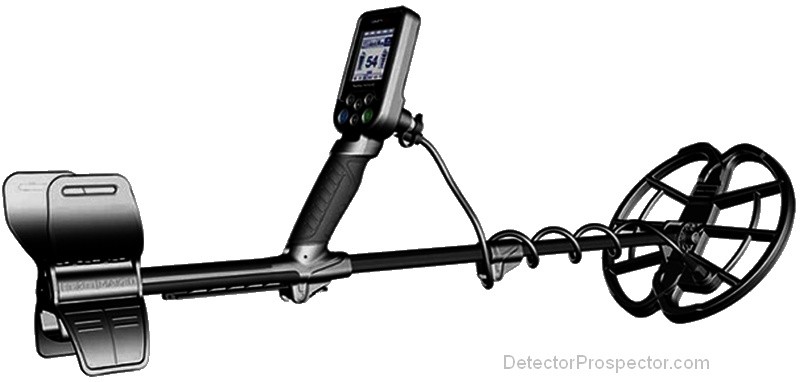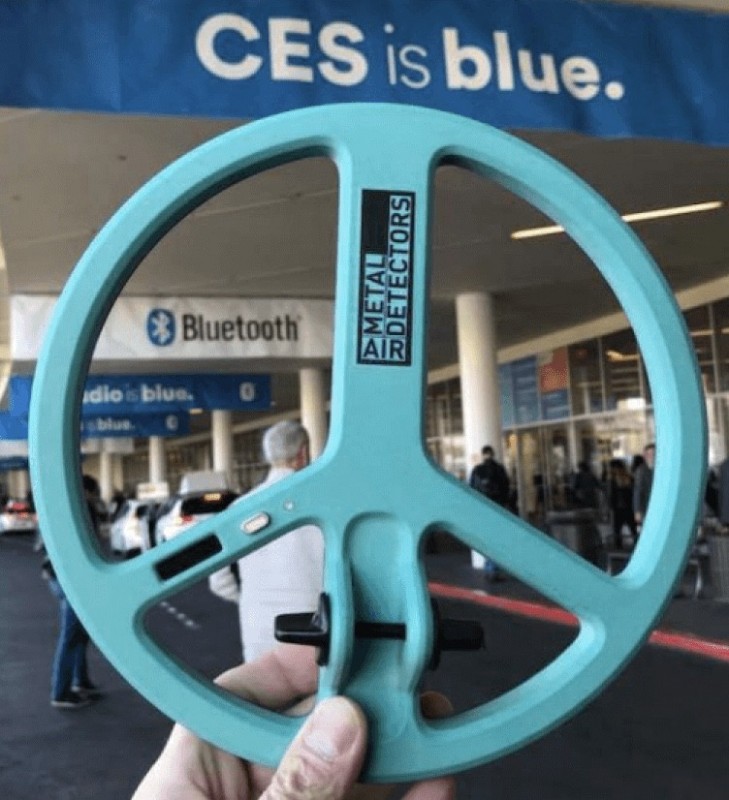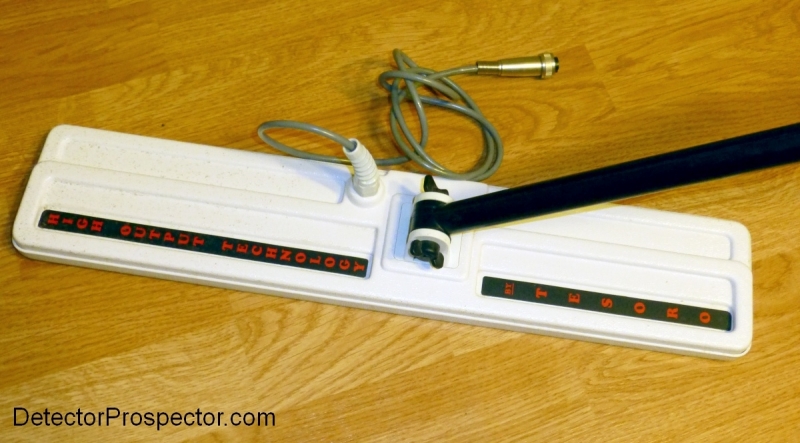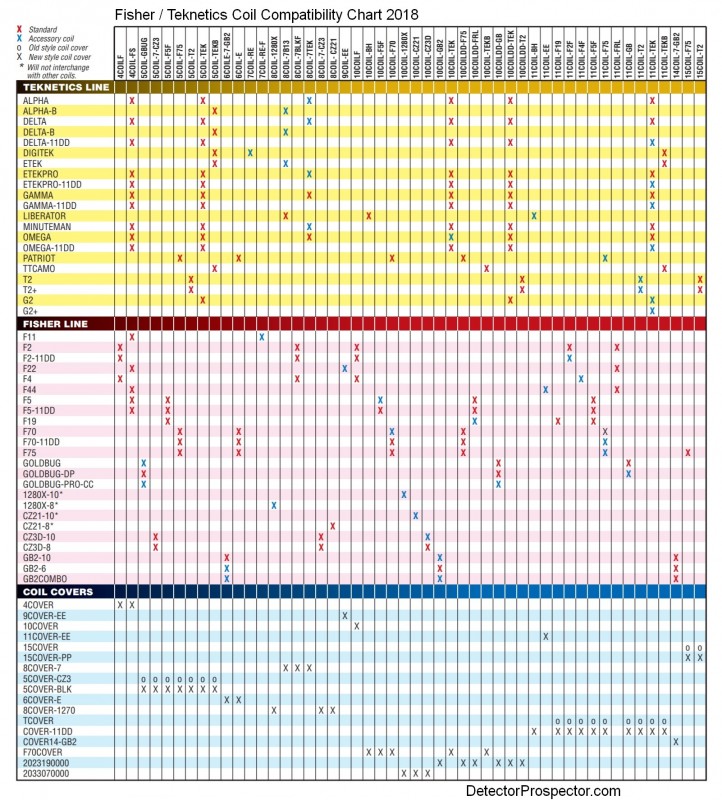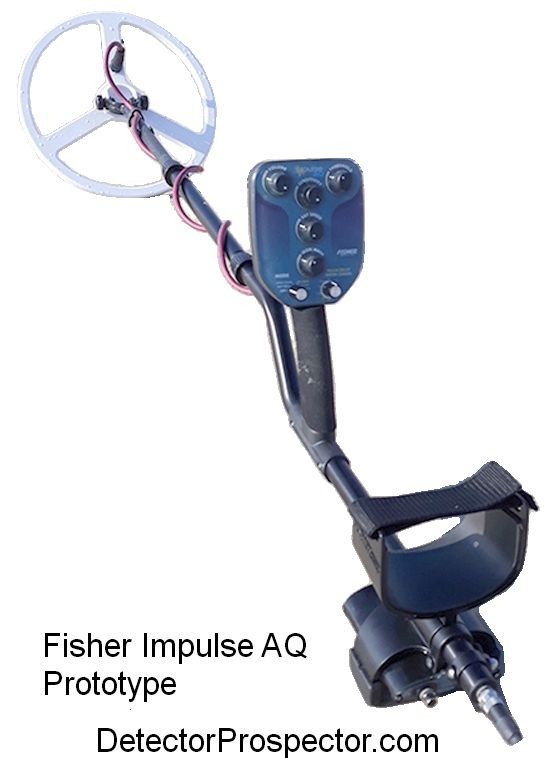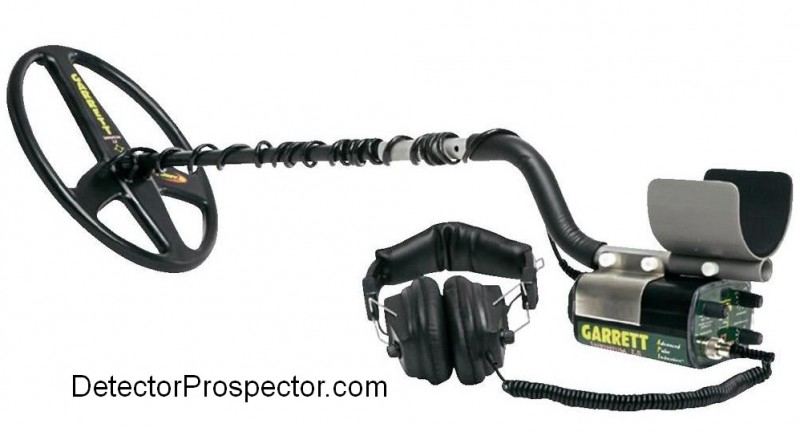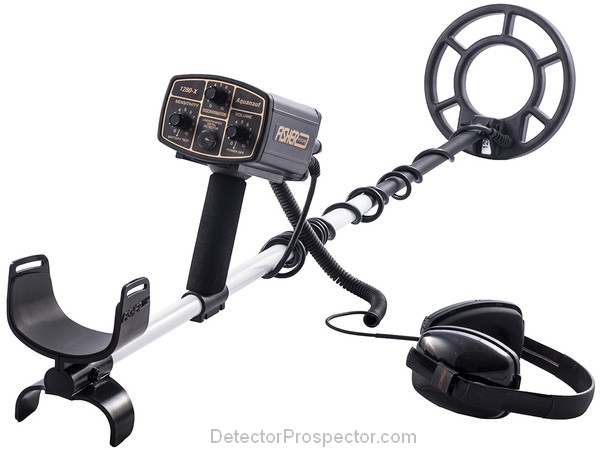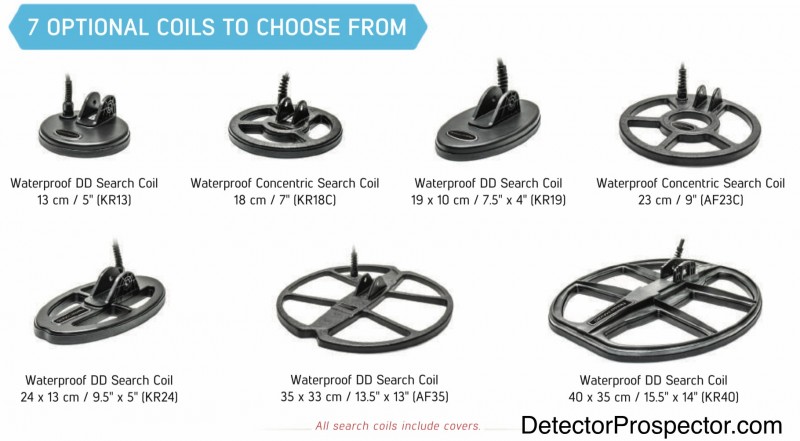-
Posts
19,761 -
Joined
Content Type
Forums
Detector Prospector Home
Detector Database
Downloads
Everything posted by Steve Herschbach
-

Deeper Rich Deposits
Steve Herschbach replied to principedeleon's topic in Detector Prospector Forum
Very many operators do just that. Detect, then scrape away the top layer, then detect again. Very common in Australia and I have seen it done here in Nevada. A bulldozer is usually employed. Lots of unhelpful responses today, a couple erased so far, sorry about that. -
A coil issue has been found in the first U.K. deliveries of the Simplex. Some, not all, detectors have exhibited false signals after the coil gets wet. Existing customers that experience the problem can get the coil replaced. Nokta/Makro has identified the cause and is purging the bad coils from the supply line. This may result in delivery delays as the situation is being addressed. As far as I know no U.S. deliveries have been made yet, and this may delay those deliveries for those with orders already in place. Proving once again that waiting a bit is not a bad idea when new detectors come out.
-

North Coast Finds
Steve Herschbach replied to alaskaseeker's topic in Metal Detecting For Coins & Relics
So you eyeballed those George? Nice! -

Deeper Rich Deposits
Steve Herschbach replied to principedeleon's topic in Detector Prospector Forum
Metal detectors do not detect weight, they detect size, and even a two pound nugget is not a very large target. Concentrations of gold are not directly detectable as detectors see each item as a separate object... you need electrical continuity. I won’t say depths exceeding three feet are impossible but close enough. Everybody wants to go out and dig large nuggets several feet deep. The best proven technology for doing that is a GPZ 7000 or GPX 5000 with large coils. You know, those “cheap” metal detectors that people post about here. Waste all the money you want, you won’t find better tools for the job. There are plenty of people offering very expensive equipment who prey on those who wish otherwise. After that you are into the realm of “large object” detecting. Helicopters flying around detecting nuggets is a fantasy. They are using indirect methods to find the gold. It’s called geophysical prospecting. HANDBOOK OF GEOPHYSICAL PROSPECTING METHODS FOR THE ALASKAN PROSPECTOR -
People have been saying it for over two years now Rick, including some rather in depth emails from me to NokMak over two years ago with details and specifications. So no, I’m not holding my breath there. The actual BigFoot coil has to have been hand made so far so I understand that, but the Cleansweep DD anyone should be able to make no problem. Why NEL or anyone else refuses to take a stab at it does puzzle me. I would love to see a Nokta/Makro “Jewelry Sweeper Pro” which would basically be a Racer 2 with a Cleansweep as stock coil. We have all sorts of detectors but nobody yet has really marketed something specifically targeting dry land jewelry hunters. That market belongs still to the White’s DFX/V3i with Bigfoot or Tesoro Golden uMax with Cleansweep. The reality is probably so few people even know coils like this have existed and just how potent they can be in certain tasks that there is no demand and therefore no genuine interest. Everyone wants depth, depth, depth, but there is a reason these type coils often got banned at competitive hunts. Ground coverage often is the best strategy, not depth. You just can’t beat these coil for covering ground fast cleaning up shallower targets. Perfect especially for hitting very large areas looking for recent drops. Ah well, time to let it go I suppose. Maybe it’s better I have mine and few others do - seems like I am always advocating for competition for myself!
-
Since XP uses a proprietary communications protocol that is not possible. XP would have to add standard Bluetooth or WiFi to their units for that to happen. Probably more chance of seeing an Air Detector happen than XP doing this but you never know. The Air Kickstarter fund has 299 backers who have pledged $76,525 to help bring the project to life. Supposedly a product by November 2019. Will it happen or is the money just going in somebodies pocket? I hope it turns out to be legit myself and that it gets some traction.
-
Many Deus owners just use the controller to program the coil, then stick the controller in the pocket after that and hunt by tones. That being the case I could see an XP app for a phone that replaced the controller, and used any Bluetooth headphones. For example an app for my iPhone and use my AirPods. The problem would be XP forgoing the sales of the controller and the headphones so not a lot of incentive for them to do that. But it would offer a way for them to easily extend sales into the lower price tier with minimal investment. Think ORX rod and coil run by phone app. The ORX can be had for as low as $649 right now and the controller by itself sells for $329.
-
When it came to low profile could Tesoro was hard to beat, though the old White’s 950 was in the same class. For some reason nobody wants to make them thin these days. As I have found with Bigfoot coils sometimes you have to get the detector that runs the coil you want. I was really thinking I could get Nokta/Makro to make a Cleansweep style DD coil at the least, but no go unfortunately.
-
-
I sympathize for sure. When it comes to VLF I have to tell myself I already have all I really need. Yet that does not stop the “want”. It’s childlike I guess but it’s just fun for me to get a new toy to play with. When the price is so low it can be very tempting indeed!
-

Found It On A Pole In The Grass
Steve Herschbach replied to ЖукЗолотой's topic in Metal Detecting For Meteorites
-

Problem With F44
Steve Herschbach replied to GaryM's topic in First Texas - Bounty Hunter, Fisher & Teknetics
The depth would be normal for my ground, and coils can detect your hand. The human body is weakly conductive. It’s actually a sign of a sensitive detector. -
Well ok I personally don’t mind the delay per se because I assume it is for good reason. There were talks of performance improvements right up until the information blackout. Well for gosh sake, if there is to be no update facility, get this thing right before release! The last thing First Texas or any of us need is another release snafu that has everyone having to send units back to the factory for updates. That seems so common sense but even the F-Pulse pinpointer had issues when it came out and it was just a pinpointer. More importantly in my mind is I am very much hoping they improve the waterproof spec of 1 meter or 3 feet. That’s basically a wader and even mask and snorkel use would be risky. I did a lot of breath hold to 6 feet myself with my other units like the ATX. In other words, a guy like me standing in deep water would not be able to sit the unit on the bottom where my feet are without exceeding three feet. Not good enough in my opinion. One quoted delay was over the waterproof thing and hopefully that means it is being improved to what is sort of a industry minimum of three meters or ten feet. If offered the choice between getting it now or getting it right, I’m all in favor of patience and getting it right. Marketing and management have got to be going crazy and putting pressure on to get it to market. Back the engineers on this one guys and give them time.
-
-
Guess where that started and the designers behind it. Here is one of the original “cell phone on a stick” models from 1985, and still in production! Fisher 1280-X, 5.8 top heavy pounds. Figure the rotational torque on that baby! You can hip mount it, but why no under elbow mount option? Garrett at least got that part right. The Fisher 1280-X and CZ-21 may be a couple of the worst ergonomic nightmares on the market today. With that in mind I don’t see any company as being in a position to get all self-righteous about this sort of thing. They are all guilty of selling some very poor ergonomic designs to this very day.
-

New Metal Detector
Steve Herschbach replied to George1971's topic in Metal Detector Advice & Comparisons
Yup, posted at the same time! Based on my first post there are only two detectors on your list I’d be interested in, the Simplex and Equinox 600. Since I want salt water capability it would be Equinox 600. If I was to never hunt salt water or only rarely I might very well go with the Simplex. I like it’s physical design better and I think it will ultimately have a better coil selection than the Equinox, and the price can’t be beat for what it offers. If waterproof does not matter do consider the new Vanquish series. Keep in mind however the Equinox and Vanquish have no more target id numbers than the Safari so no advantage there. Note I am very much talking about what I like. I am speaking strictly from my own preferences. You might get something I like and hate it. It does happen. I don’t set the standards by any means as to what is good or not in the metal detector world. I’m just one guy with an opinion, that’s all, so do consider other opinions as well. By the way 10 trash targets to one good item is great. I often dig far more trash than that for a single good find. A nugget hunt might very well mean 100 bullets and nails for one nugget, and when jewelry detecting in a park you may as well call it aluminum detecting. I dig piles of aluminum to get a single ring. -

New Metal Detector
Steve Herschbach replied to George1971's topic in Metal Detector Advice & Comparisons
It does sound like you want better discrimination George. What would you think if I told you the Safari is better than most in that regard? The Safari as a multifrequency model will generally deliver more accurate target id numbers than any single frequency detector, while still working well on salt water beaches. The main thing limiting the Safari in that regard is the -10 to 40 target id range where more targets occur closer together than in detectors with more target id numbers. Your options there would be to go to the E-Trac for the dual target id numbers and two dimensional screen, vastly expanding the range. Or to the CTX 3030, with 1450 possible target id responses. Except that may not help you at all! The real issue is detectors originated in the United States for coin detecting. It just so happens that if you want to detect U.S. coins most can be targeted while avoiding most trash due to the way our coins read. I can go out and dig coins here and little else. But that does not apply to most other places that have different coins of lower quality metal content. It also does not apply to relic detecting or jewelry detecting because valuable targets occur at all id numbers. Most relic hunters and jewelry hunters simply dig all non-ferrous targets. I just got back from two weeks detecting in the U.K. and the standard is to dig all non-ferrous targets. If I beach detect, I dig all non-ferrous targets. The XP Deus is a great detector, but it does not have a very good target id capability when it comes to separating various non-ferrous items one from the other, and many people do not like it for park hunting in the U.S. due to this. It does however have superb ability to separate ferrous from non-ferrous, making it perfect for most European field detecting. It does not fare as well on salt water beaches due to the single frequency operation however. Multifrequency has an inherent advantage for handling ground minerals and salt water at the same time. I hate to say it but if you do not like digging trash you may not like metal detecting. That’s what we normally do. We dig trash. The good finds are the exception, not the rule. You can go to the E-Trac or CTX and try and be picky about digging targets, but that simply means you will also miss good targets that read the same as whatever item you are rejecting. You can target certain good items and indeed dig far less trash, but it is a trade off. Some people hate digging trash and reject most trash targets and still make great finds however so that option exists. Or you can readjust your thinking to digging all non-ferrous targets, which is the norm for most beach hunters and European detectorists due to the wide range of possible good targets. If you do that your detector options boil down to a popularity contest since most detectors separate ferrous from non-ferrous quite well. Keeping in mind that if you hunt salt water beaches multifrequency has an edge. These days I generally dig all non-ferrous targets and prefer lightweight affordable detectors. Machines I have an interest in at the moment were I shopping are the new Makro/Nokta Simplex+, the new Minelab Vanquish series, the Minelab Equinox models, the XP ORX, and XP Deus. Of those the Minelab multifrequency models have the edge around saltwater. The only other detectors I personally consider are dedicated gold nugget detectors and so outside the range of your inquiry. If on the other hand I had to pick a detector based purely on it’s discrimination capability, it would be the CTX 3030. -
Your basic premise Rick is that a detector with a straight shaft is an inherently flawed design. As I noted already I don’t argue with that premise personally. I prefer a balanced S shaft design, and have always held the T2/F75 up as my example of a near perfect detector from an ergonomic perspective. Many Whites models are also quite good. The big factor here is that to balance the coil requires an under elbow battery box to offset the coil weight. This in turn means limiting the detector to a minimum weight of about 3.5 lbs. It also creates a bulky upper rod and box assembly. The only way to break under the 3.5 lb weight barrier is to lose the under elbow counterweight, and that means all detectors weighing under three pounds are inherently nose heavy and out of balance. The benefit is less actual weight and more compact designs. Weight has become a key factor in marketing and getting under three pounds a goal to be attained, so I see this trend continuing. Explaining that a heavier detector may actually be more comfortable goes against “common sense” and salespeople generally don’t know better anyway. Moving the battery into the pod also lowers manufacturing costs adding fuel to the trend. My observation is balance matters more than your rotational argument when it comes to design, especially in heavier models. This is born out by nearly all serious prospectors swinging pulse induction detectors with straight shafts. The Minelab Excalibur is another machine that comes with a S shaft that almost everyone immediately replaces with a balanced straight shaft. The bottom line is my survey revealed that 60% of respondents prefer a S shaft and 40% a straight shaft. S shaft does win the day but it’s not a slam dunk. In my personal use I find that it is not the shaft that matters, but the balance and the hand grip. If a detector is balanced and has a good hand grip... that is my preference, with S shaft being third place as a factor. The CTX 3030 is remarkably good for a heavy detector due to perfect balance and a great grip even though it has a straight shaft. And what to make of comments like this from the survey thread: Some people hate S shaft designs, and designers do hear them also. It’s an issue that will never please everyone. All detectors under three pounds are nose heavy, so it comes down to the hand grip. The fact is people in general love the ergonomics of the Deus even though it is nose heavy. While the S shaft contributes to that, I think it is the near perfect hand grip, literally a pistol grip, plus the light weight that really makes the difference. It sucks fast with larger coils. My main complaint on the Equinox is that putting the battery in the grip makes for a rounded poor grip design, and this is what most people find uncomfortable about the unit. It appears to me the Simplex mimics the Deus molded grip and so will have a better shot at comfort in that regard. Again, I do agree again with your assertion about S versus straight shaft as a generality, but I think balance plays a huge role to the point where a properly balanced straight shaft feels better than a nose heavy S shaft design. Hand grip design is also very important, but it is highly subjective due to people’s differing hand sizes. I love the F75 grip personally, and a large handed friend hated it. While I agree with you that all the under three pound models and in particular the straight shaft models are “inherently flawed” from an ergonomics perspective, with all due respect to Dave Johnson, I have the benefit of having more real world experience with more people actually using the devices. The reality is simple. It’s a mixed bag. For every person that says they hate a particular design, Equinox for example, there are plenty that wonder what the other people are complaining about. My assertion is that for most men with good upper body strength once you get under three pounds it’s simply not the issue for many that it would be if the detector were heavier. In my case, having swung 5 - 7 pound detectors for years, anything under three pounds is like swinging a feather all day. I find the grip matters a lot, and much prefer the Deus grip over the Equinox grip. I also found with use it mattered less and now I don’t have an issue holding the Equinox grip where I did initially. My hand actually adjusted to it. Balance is still an issue. I can swing the stock coil with no issue for an unlimited number of hours. But that 15” coil makes it more nose heavy, and my upper back muscle protested for four days in the U.K. before it broke in. I highly recommend steveg’s aftermarket rod with counterbalance for those swinging the Equinox with 15” coil for that reason. To sum up I basically agree with you but real world experience and feedback from users tells me it’s more complex than just “S rod good, straight shaft bad”. Out of the three detectors under consideration in the original post I would suspect Equinox falls at the bottom of the heap for perceived comfort purely because of the design of the hand grip. People with large hands tend to be fine with it while it hurts smaller handed people on initial use. I will hold out hope as proved to be the case with me that hand muscles can be exercised to adapt with extended use. None of which entered my mind when I started this thread! It came about due to posts I saw about the Simplex being an Equinox copycat. The fact is Equinox copies designs that came before it, Quest specifically and Deus more generally, and I wanted to note that for the record.
-

Steve's 2019 UK Adventure
Steve Herschbach replied to Steve Herschbach's topic in Metal Detecting For Coins & Relics
Sorry Horst but as mentioned earlier I am not returning next year as I have other plans. -
Published on Dec 22, 2017 - Glenn Wadstein mined Sterling Creek Mine from 1986-2001 and found pounds and pounds of gold. He built his own equipment and treated the job as a sand and gravel operation. Here's the equipment he built, the way he moved overburden to reveal the ore and how he processed the ore to filter out the gold. Wadstein took this video in 1986 at the outset of the mining operation, edited it into a clear and descriptive narrative and then converted the video to digital format in 2017. Wadstein narrated the video on October 22, 2017 at the Ashland Literary Arts Festival held Hannon Library, Southern Oregon University.
-

First Accessory Coil For The Simplex
Steve Herschbach replied to Jackpine's topic in Nokta / Makro Metal Detectors
Good for you Chuck. I have to admit to being tempted myself! I see no reason not to expect that most of the Kruzer coils below except perhaps the largest would not be available for the Simplex by sometime next year. That big coil would really be nose heavy on such a light detector. -

First River Nugget
Steve Herschbach replied to Hardtimehermit's topic in Gold Panning, Sluicing, Dredging, Drywashing, Etc
Excellent, good for you! 👍

